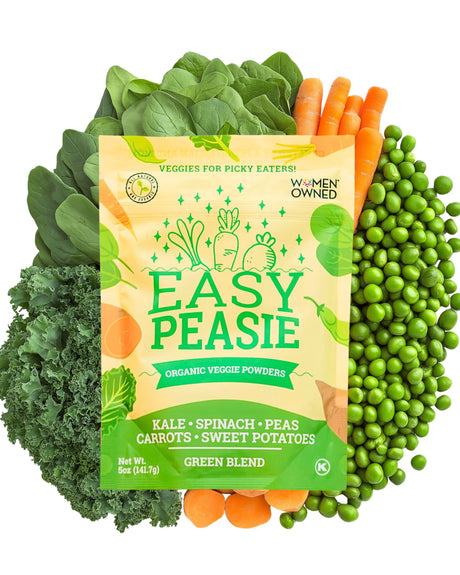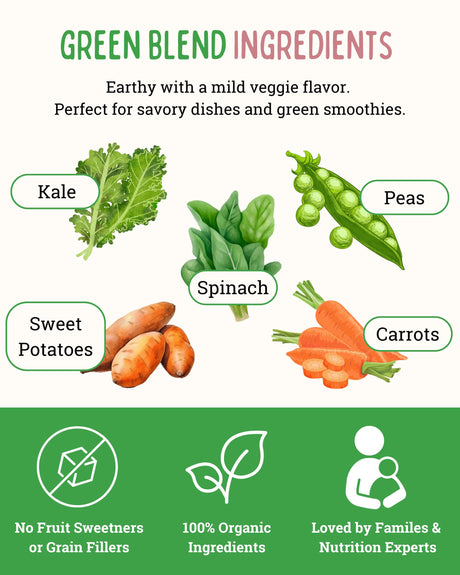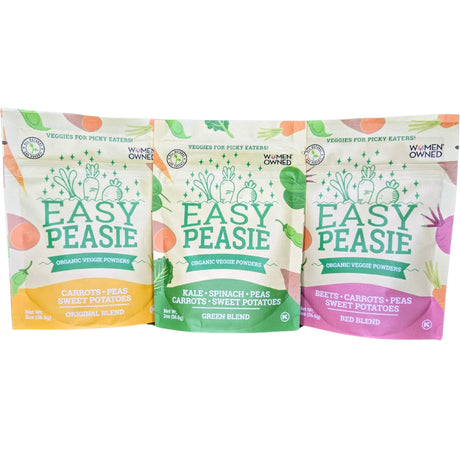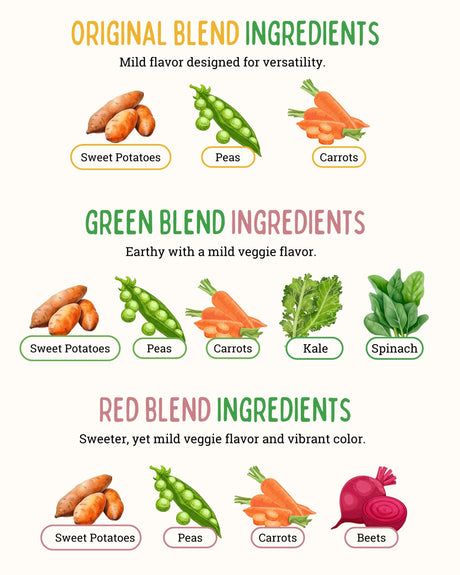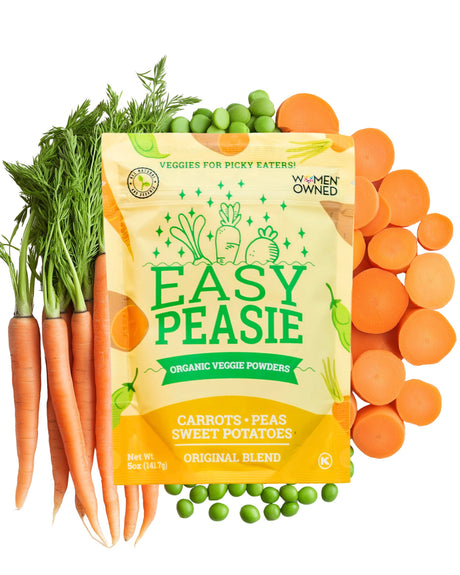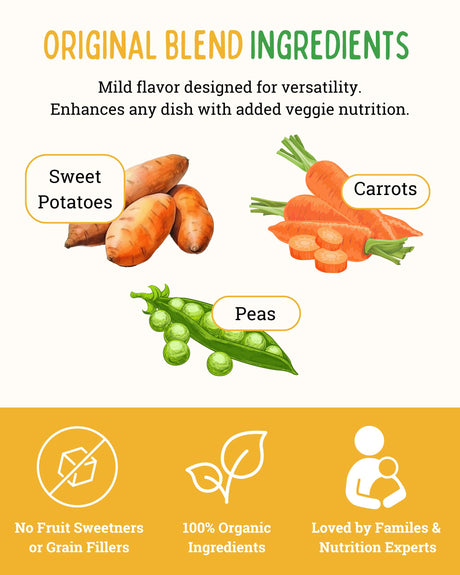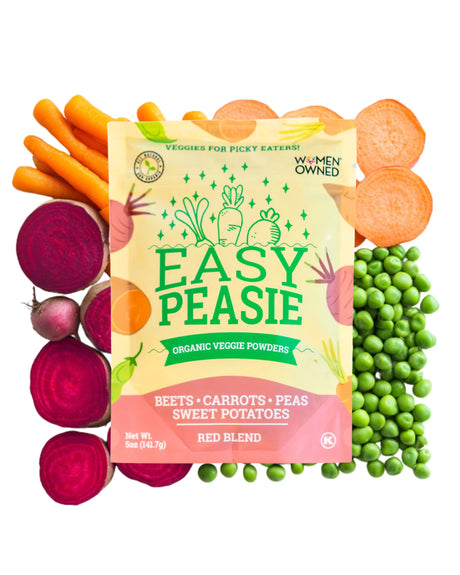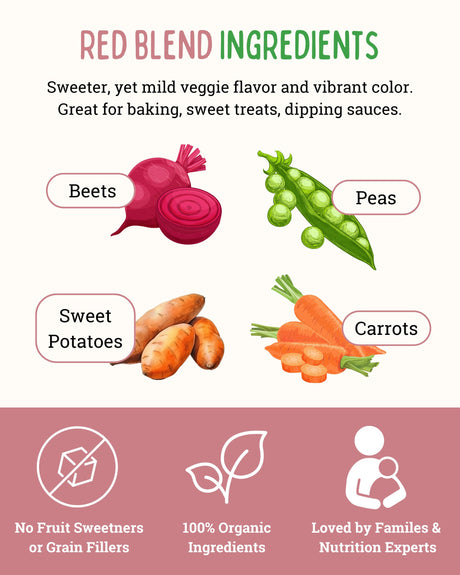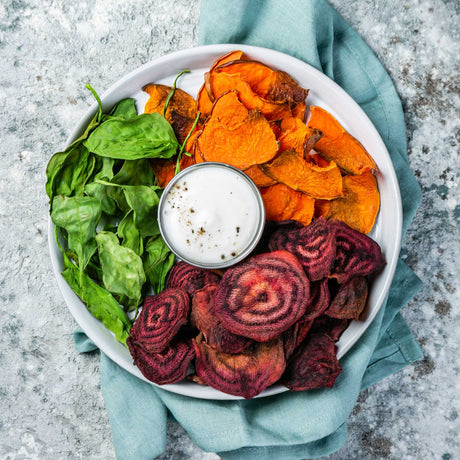Seasonal Vegetables
Autumn's harvest brings with it a spectacular array of vegetables, each a powerhouse of nutrients and flavors. Root vegetables like sweet potatoes and carrots, leafy greens such as kale and Swiss chard, and squashes of all shapes and sizes are not just colorful additions to our plates; they are also laden with vitamins, minerals, and antioxidants.
These seasonal delights contribute to a stronger immune system, better digestion, and overall well-being. Embracing these seasonal offerings means we're not only treating our taste buds but also nourishing our bodies.
Weekend Culinary Adventure: A Fall Harvest Stew
In this article, we're diving into the heart of autumn cooking with a recipe that's perfect for your weekend culinary exploration. Imagine a pot brimming with the best of fall's harvest, simmering slowly to create a stew that's both nutritious and comforting.
This Fall Harvest Vegetable Stew is more than just a meal; it's a celebration of autumn's bounty, a testament to the simple pleasures of seasonal cooking. Whether you're a seasoned chef or a kitchen novice, this recipe promises to bring a touch of autumn magic to your table.
Let's embark on this delicious journey together, embracing the flavors of the season in a dish that's sure to become a cherished part of your fall repertoire.
Savoring the Seasons
Nature's Calendar: A Guide to Optimal Nutrition
Eating seasonally aligns our diets with the natural rhythm of nature's produce calendar. When we choose fruits and vegetables that are in season, we're not just indulging in the freshest flavors; we're also reaping the benefits of peak nutritional value.
Seasonal produce is often harvested at its prime, ensuring that it's packed with essential vitamins, minerals, and antioxidants. For instance, a tomato plucked at the height of summer bursts with more flavor and nutrients than one grown out of season and shipped across continents.

Flavor at Its Peak
There's an undeniable difference in taste when it comes to seasonal eating. Vegetables and fruits harvested during their appropriate seasons boast a richness and depth of flavor that is often lost in their off-season counterparts.
This is nature's way of telling us what to eat and when. A crisp apple in fall, a juicy berry in summer – each season brings its unique palette of flavors, making every meal an exciting culinary adventure.
Embracing seasonal eating means each dish is not just nourishing but also a celebration of the finest tastes nature has to offer.
Community and Economy: Supporting Local Growers
There's a community aspect to seasonal eating as well. By purchasing local, seasonal produce, we're supporting the livelihoods of local farmers and contributing to the local economy.
This fosters a sense of community and connection, as we come to know the people who grow our food. It's a relationship that enriches our understanding of food, from farm to table, and strengthens the bond between the consumer, the farmer, and the land.
Seasonal Eating
Finally, seasonal eating encourages culinary creativity and exploration. Each season brings a new array of produce to experiment with, challenging us to try new recipes and cooking methods. It's an opportunity to grow as home cooks and food enthusiasts, discovering the joy of creating dishes that reflect the colors and flavors of the season.
In essence, seasonal eating is more than a dietary choice; it's a lifestyle that celebrates nutrition, flavor, community, and environmental stewardship. It's about tuning in to the rhythms of nature and enjoying the bountiful, delicious rewards that come with it.
Autumn's Bounty
A Palette of Fall Vegetables: Nature's Harvest
As the leaves turn and the air grows crisp, autumn ushers in a rich tapestry of vegetables, each bringing its unique flavor and health benefits to our tables. This season is particularly generous, offering a variety of vegetables that are not just delicious but also packed with nutrients.
Pumpkin: The Heart of Fall
Pumpkin, the quintessential symbol of fall, is much more than a Halloween decoration. Rich in vitamins A and C, it's a powerhouse for boosting immunity and eye health. Its warm, sweet flesh makes it a versatile ingredient for soups, stews, and even desserts.
Sweet Potatoes: Nature's Candy
Sweet potatoes, with their deep orange hue, are as nutritious as they are delicious. High in fiber and antioxidants, they support digestive health and can help regulate blood sugar levels. Their natural sweetness adds a comforting note to any autumn dish.
Carrots: A Crunch of Nutrients
Carrots, another root vegetable favorite, are known for their high beta-carotene content, which is essential for good vision and skin health. They add a delightful crunch and sweetness to stews, making them a favorite among both adults and children.
Kale: The Super Green
Kale, a robust leafy green, thrives in cooler temperatures, becoming sweeter after a frost. It's a nutritional powerhouse, loaded with vitamins K, A, and C, and is excellent for bone health and antioxidant support. Its hearty texture holds up well in stews and soups.
Brussels Sprouts: Tiny but Mighty
Brussels sprouts, often underrated, are mini cabbages bursting with flavor and nutrients. They are high in fiber, vitamins C and K, and have properties that may support healthy blood sugar levels. When cooked right, they add a nutty and slightly sweet flavor to dishes.

Onions and Garlic: The Flavor Enhancers
No stew is complete without the foundational flavors of onions and garlic. These kitchen staples are not just flavor enhancers; they also offer impressive health benefits. Garlic is known for its cardiovascular and immune-boosting properties, while onions are rich in antioxidants and can aid in digestive health.
Mushrooms: Earthy and Nutritious
Mushrooms, with their earthy flavor, are a fall favorite. They're a great source of selenium and B vitamins, supporting immune function and energy metabolism. Whether you choose button, cremini, or shiitake, mushrooms add a depth of flavor and texture to any stew.
Embracing Fall's Harvest
Each of these vegetables brings its unique set of nutrients, flavors, and textures, making fall an exciting time for cooking and eating. Incorporating a variety of these seasonal vegetables into your diet not only enhances your meals but also contributes to a well-rounded and nutritious diet. As we delve into the recipe for our Fall Harvest Vegetable Stew, let's celebrate these autumnal gems and the healthful, flavorful joy they bring to our tables.
Embarking on a Culinary Journey: Prep Like a Pro
Market Fresh: Choosing the Best Vegetables
Before you even heat the pot, your stew's success begins at the market. Fall is a time of abundance, and selecting the freshest vegetables is key to a flavorful stew.
Look for vibrant colors and firm textures in pumpkins, sweet potatoes, and carrots. Their skin should be smooth and free of blemishes.
For leafy greens like kale, seek out crisp, dark leaves. When it comes to Brussels sprouts, smaller can be better – they tend to be sweeter and more tender.
And don't forget the onions and garlic; they should feel heavy for their size and have dry, papery skins.
Kitchen Essentials: Tools of the Trade
Now, let's gear up for the cooking process. A good-quality, heavy-bottomed pot is essential for even cooking and preventing burning.
A sharp chef's knife will make chopping your vegetables a breeze, while a cutting board provides the perfect canvas for your prep work.
Measuring cups and spoons are crucial for balancing flavors, especially when dealing with spices and herbs. And don’t forget a sturdy wooden spoon for stirring your creation to perfection.

The Prep Station: Organizing for Efficiency
Organization is key in the kitchen. Before you start, gather all your ingredients and tools. This mise en place approach – everything in its place – ensures a smooth cooking experience.
Chop and measure your ingredients beforehand, so once the pot is on, you can focus on the art of cooking rather than scrambling for that next ingredient.
Ready, Set, Cook!
With your fresh ingredients at hand and your kitchen tools ready, you're all set to embark on this culinary adventure. Remember, cooking is not just about the end product but also the joy of the process.
So, take a moment to appreciate the vibrant colors and fresh aromas of your ingredients. You're not just making a stew; you're creating a nourishing experience for yourself and your loved ones. Let's get cooking!
Fall Harvest Vegetable Stew: A Symphony of Seasonal Flavors
Ingredients: A Palette of Autumn's Best
- 2 tablespoons olive oil
- 1 large onion, chopped
- 3 cloves garlic, minced
- 2 cups pumpkin, peeled and cubed
- 2 cups sweet potatoes, peeled and cubed
- 1 cup carrots, sliced
- 1 cup Brussels sprouts, halved
- 4 cups vegetable broth
- 1 can (14 oz) diced tomatoes
- 2 teaspoons fresh thyme, chopped
- 1 teaspoon fresh rosemary, chopped
- Salt and pepper, to taste
- 2 cups kale, chopped
- Optional: 1 can (15 oz) white beans, drained and rinsed (for added protein)
Substitutions for Dietary Needs:
- Olive oil can be replaced with avocado oil for a higher smoke point.
- For a gluten-free option, ensure the vegetable broth is certified gluten-free.
- To make it vegan, avoid any animal-based broth.
- For a low-sodium diet, opt for low-sodium broth and tomatoes.
Method: Crafting Your Culinary Masterpiece
- Foundation of Flavor: In a large pot, heat the olive oil over medium heat. Add the chopped onion and garlic, sautéing until the onion becomes translucent and fragrant, about 3-4 minutes.
- Vegetable Medley: Stir in the pumpkin, sweet potatoes, carrots, and Brussels sprouts. Cook for about 5 minutes, just enough to start softening the vegetables and melding the flavors.
- Liquid Love: Pour in the vegetable broth and diced tomatoes (with their juice). Bring the mixture to a gentle boil.
- Herbal Harmony: Add the chopped thyme and rosemary. Season with salt and pepper to taste. Reduce the heat, cover, and let it simmer. This slow cooking allows the flavors to deepen and the vegetables to become tender, about 20-25 minutes.
- The Final Flourish: Stir in the chopped kale and white beans (if using). Continue to simmer until the kale wilts and the beans are heated through, approximately 5 minutes.
- Taste and Tweak: Give your stew a final taste test. Adjust the seasoning if needed. Remember, the key to a great stew is balance – a harmony of flavors that complement each other.
Serving Suggestion: Ladle the stew into bowls. This recipe serves about 6 people. Serve it hot, perhaps with a side of crusty bread or a sprinkle of grated Parmesan cheese for an extra touch of comfort.
Cooking Tips:
- Consistency is key: If the stew is too thick, add a bit more broth to reach your desired consistency.
- Slow and steady: Don’t rush the simmering process; it’s essential for developing the flavors.
- Fresh vs. dried herbs: If using dried herbs, reduce the quantity by a third, as they are more potent than fresh.
Storing and Reheating Tips: Savoring the Stew Beyond Today
Preserving the Goodness: Storing Your Stew
- Cool Down First: Before storing, allow the stew to cool to room temperature. This prevents condensation inside the container, which can make the stew soggy.
- Airtight is Right: Transfer the stew into airtight containers. This keeps it fresh and prevents absorbing odors from the fridge.
- Portion Control: Consider dividing the stew into individual serving sizes. This makes for easy reheating and ensures you only warm what you’ll eat.
- Refrigerator Rules: In the fridge, your stew will stay fresh for up to 3 days. Perfect for quick, nutritious meals on busy days!
- Freezer Friendly: For longer storage, freeze the stew. It can last up to 3 months in the freezer.
- Tip: Label the container with the date, so you remember when it was stored.
Reheating Rituals: Bringing Back the Warmth
- Thaw with Care: If frozen, thaw your stew in the refrigerator overnight. This ensures even reheating and maintains the texture of the vegetables.
- Stovetop Method: Reheat on the stove over medium heat. Stir occasionally to ensure even heating and to prevent sticking at the bottom of the pot.
- Regaining Consistency: If the stew seems too thick upon reheating, add a little water or broth. This helps to bring back the original consistency without diluting the flavors.
- Temperature Check: Ensure the stew is heated through to a safe temperature of 165°F. This is especially important for stews that have been stored in the freezer.
Embracing the Heart of Autumn Cooking
Remember, cooking is more than just preparing food; it's about creating memories, nurturing health, and celebrating the seasons. This Fall Harvest Vegetable Stew is a warm embrace from autumn, offering both comfort and nourishment.
Here's to many more delightful and nourishing meals that not only feed our bodies but also our souls. Happy cooking, and happy fall! 🍂🥣🧡
Leave your comments below; we love to hear from you! And don't forget to follow EasyPeasie for more veggie info and convo on YouTube, Facebook, and Instagram! ~ThePeas


